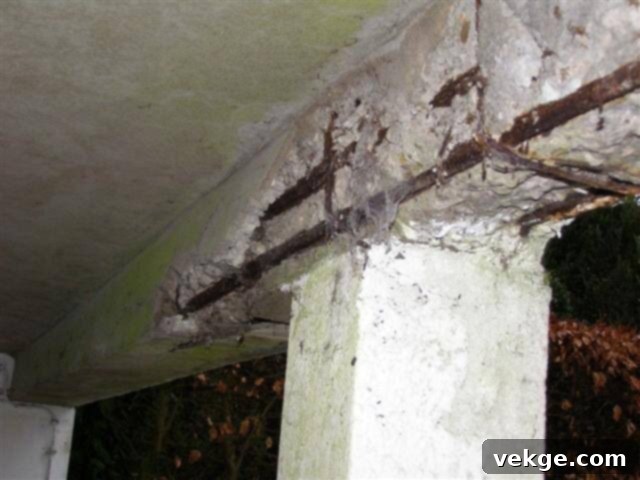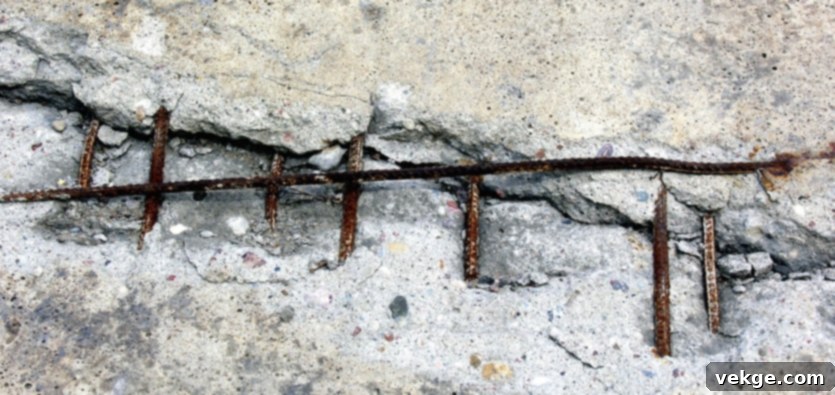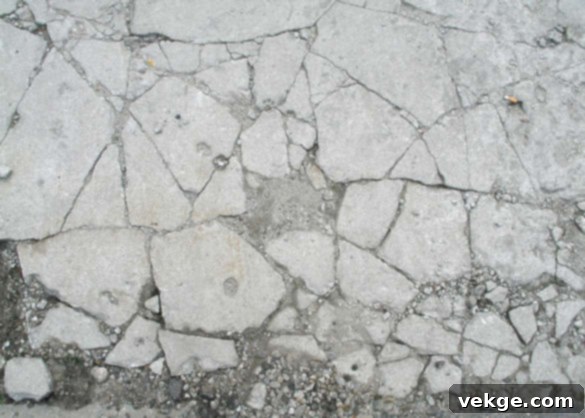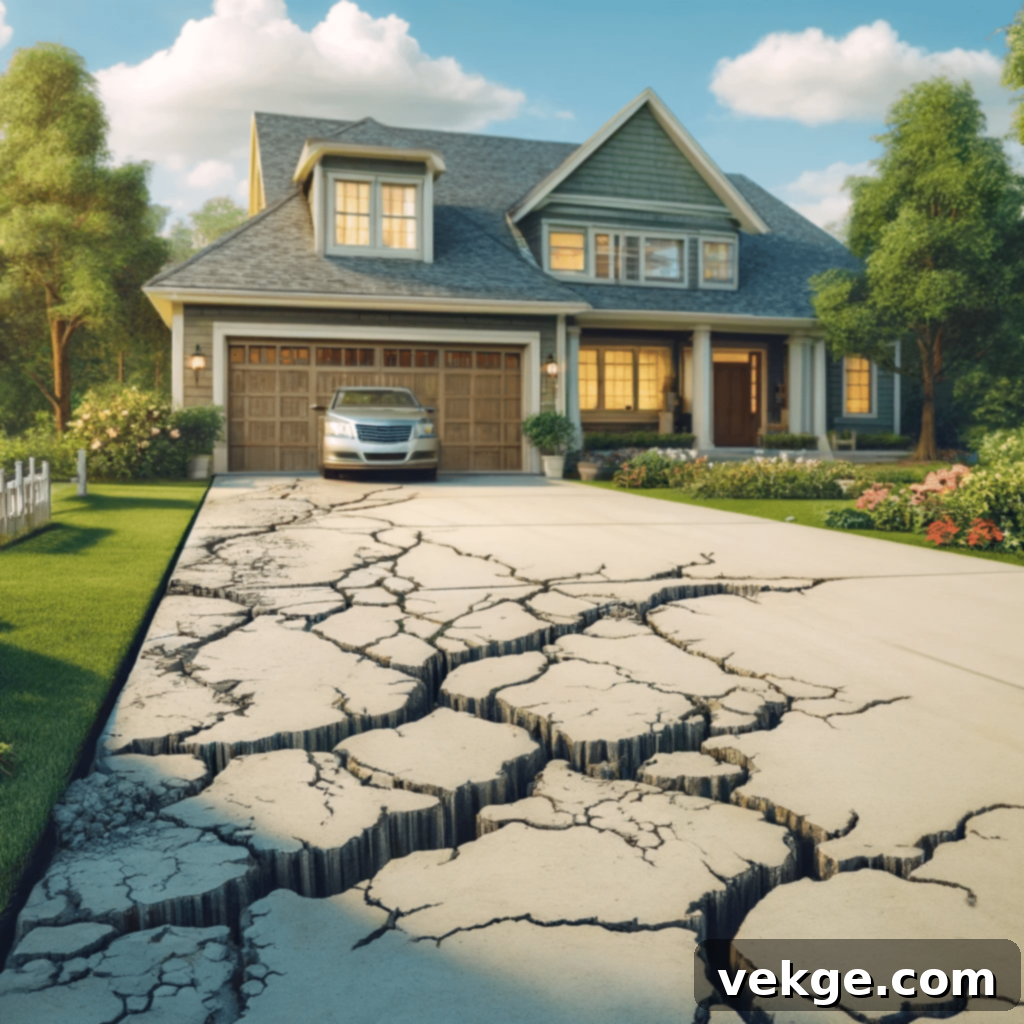Comprehensive Guide to Concrete Damage in North Carolina: Causes, Identification, and Expert Repair Solutions
Concrete stands as one of the most robust and adaptable construction materials globally, revered for its strength, resilience, and versatility across countless applications. From durable foundations and sturdy pavements to elegant decorative surfaces, concrete forms the backbone of modern infrastructure. However, despite its impressive inherent qualities, concrete is not immune to wear and tear. Like any other building material, it is susceptible to damage influenced by a variety of environmental and structural factors, which can significantly compromise its durability, structural integrity, and aesthetic appeal over time.
In regions like North Carolina, the unique climate and environmental conditions present specific challenges to concrete longevity. Common culprits behind concrete damage in the state include persistent erosion, the insidious corrosion of reinforcing steel (rebar), and chemical reactions such as carbonation. Erosion, in particular, poses a significant threat, as North Carolina frequently experiences above-average annual rainfall. This high precipitation can lead to detrimental effects on various concrete structures, including residential driveways, public sidewalks, expansive pool decks, and even crucial building foundations. Understanding these specific vulnerabilities is the first step toward effective mitigation and preservation.
Fortunately, with the right approach, damaged concrete can often be fully restored. Implementing appropriate concrete repair methods is paramount for regaining the material’s original strength and durability, while simultaneously halting further deterioration. A proactive approach, beginning with a thorough awareness of the primary causes of concrete damage, is essential for implementing proper maintenance strategies. This knowledge empowers property owners to make informed decisions, ensuring the extended lifespan and continued safety of their valuable concrete structures.
Identification of Concrete Damage: What to Look For
Recognizing the early signs of concrete damage is crucial for timely intervention and preventing minor issues from escalating into major structural problems. Ignoring these warning signals can lead to costly and extensive repairs down the line, potentially compromising the safety and stability of entire structures. Homeowners and property managers should regularly inspect concrete surfaces for any abnormalities to ensure the long-term health of their property.
Physical Manifestations of Deterioration
 Concrete damage can present itself in a variety of visual and structural forms. Each manifestation offers clues about the underlying cause and potential severity, making prompt identification key to maintaining the structural integrity of your property. Some of the most common signs of concrete deterioration include:
Concrete damage can present itself in a variety of visual and structural forms. Each manifestation offers clues about the underlying cause and potential severity, making prompt identification key to maintaining the structural integrity of your property. Some of the most common signs of concrete deterioration include:
- Cracking: This is perhaps the most common and visible sign of concrete distress. Cracks can range from fine hairline fissures, which might be largely aesthetic, to wide, deep fractures that indicate significant structural concerns. They typically occur due to factors such as ground movement, freeze-thaw cycles, drying shrinkage during curing, thermal expansion and contraction, or excessive loading. Different types of cracks (e.g., settlement cracks, structural cracks, pattern cracks) signify different underlying issues, and understanding these distinctions is vital for determining the appropriate repair strategy. Ignoring cracks can lead to critical water infiltration, exacerbating other forms of damage like rebar corrosion.
- Spalling: Characterized by portions of concrete breaking away from the surface in flakes or larger chunks. This often happens when reinforcing steel (rebar) corrodes beneath the surface. As rebar rusts, it expands up to ten times its original volume, exerting immense pressure on the surrounding concrete, causing it to chip and break off. Spalling is a serious indicator of rebar corrosion and significantly compromises both the structural integrity and the protective qualities of the concrete. It can also occur due to severe freeze-thaw cycles or poor concrete quality.
- Pitting: These are small, shallow depressions that appear on the concrete surface, giving it a rough, pockmarked, or mottled appearance. Pitting can develop due to exposure to harsh weather conditions, chemical spills (such as de-icing salts, acids, or other corrosive agents), or simply from the wear and tear of everyday use and abrasion. While often cosmetic in its early stages, severe pitting can weaken the surface, making it more vulnerable to further damage and considerably more difficult to clean.
- Erosion: This refers to the gradual wearing away of the concrete surface, usually from prolonged exposure to moving water (especially heavy rainfall, runoff, or flowing water) or wind-blown abrasives. In North Carolina, frequent and heavy rains can wash away parts of concrete surfaces, particularly on driveways, patios, and sidewalks with inadequate drainage, leading to an uneven, weakened, and aesthetically compromised surface.
- Scaling: Similar to spalling but typically involves the uniform flaking or peeling away of a thin layer (usually 1/8 to 1/2 inch) of the concrete surface paste. This is most commonly caused by exposure to repeated freeze-thaw cycles, especially when de-icing salts are used, or by improper finishing practices that trap excessive water near the surface during the curing process.
- Discoloration/Efflorescence: While often primarily cosmetic, patches of white powdery substance (efflorescence) on the concrete surface indicate moisture movement through the concrete. This process dissolves salts within the concrete and deposits them on the surface as the water evaporates. Persistent dampness can also lead to darker stains, mold, or mildew growth, strongly hinting at underlying moisture problems that need addressing.
Regular inspections and consistent maintenance are powerful tools for identifying these various signs of concrete damage early. Facilitating timely repairs not only restores the appearance but, more importantly, prevents the acceleration of deterioration, safeguarding your investment and the safety of your property.
Common Causes and Contributing Factors
Understanding the root causes of concrete damage is paramount for effective prevention and repair. Multiple factors, often acting in concert, can lead to concrete deterioration. Addressing these contributing factors is key to minimizing damage and preserving structural integrity.
- Water and Moisture Infiltration: This is arguably the most pervasive and destructive cause of concrete damage. Water can infiltrate concrete through cracks, porous areas, or inadequate waterproofing. Once inside, it facilitates several destructive processes:
- Freeze-Thaw Cycles: In climates with fluctuating temperatures, absorbed water expands when it freezes, creating immense internal pressure that can crack and spall concrete. This cycle repeats, progressively weakening and disintegrating the material.
- Steel Corrosion: Water, especially when carrying chlorides (e.g., from road salt, seawater, or de-icing chemicals), provides the electrolyte necessary for the oxidation of reinforcing steel (rebar). As rebar corrodes, it expands up to ten times its original volume, causing the surrounding concrete to crack, delaminate, and spall.
- Hydrostatic Pressure: Accumulating water beneath concrete slabs (like basement floors or driveways) can exert significant upward pressure, leading to cracking, heaving, and settlement issues.
- Tree Roots: The natural growth of tree roots, particularly from large, mature trees planted too close to concrete structures, can exert immense and relentless pressure on the underlying soil and the concrete itself. As roots expand, they can lift and crack sidewalks, driveways, foundations, and retaining walls, creating significant structural damage and trip hazards.
- Soil Settlement and Instability: Over time, the soil supporting a concrete structure can settle, shift, or erode. This can be due to a number of factors:
- Poor Compaction: If soil is not properly compacted before concrete is poured, it will settle unevenly over time, creating voids and uneven support.
- Erosion: Heavy rainfall or poor drainage can wash away supporting soil, creating large voids beneath slabs and foundations.
- Expansive Clays: Certain soil types, like expansive clays prevalent in some areas, swell when wet and shrink when dry, leading to constant ground movement that stresses and damages concrete.
- Inadequate Drainage: Water pooling near foundations softens the soil, reducing its load-bearing capacity and causing settlement.
Uneven soil support creates an unstable foundation, resulting in concrete cracks, slab movement, and other forms of structural damage.
- Chemical Reactions: Concrete can undergo various internal and external chemical reactions that compromise its integrity:
- Carbonation: Atmospheric carbon dioxide slowly penetrates the concrete and reacts with calcium hydroxide, forming calcium carbonate. This process reduces the concrete’s pH level from highly alkaline (which naturally protects rebar) to more neutral, making the reinforcing steel highly susceptible to corrosion.
- Sulfate Attack: Sulfates present in soil, groundwater, or industrial waste can react with components in hardened cement paste, leading to the formation of expansive products that cause cracking, spalling, and eventually complete disintegration of the concrete.
- Alkali-Aggregate Reaction (AAR): A less common but extremely severe reaction where certain reactive aggregates (rocks containing silica) in concrete react with alkaline hydroxides in the cement paste. This reaction causes expansive gels to form, which absorb water and swell, cracking the concrete from within.
- Poor Workmanship and Materials: Substandard concrete mix design (incorrect water-cement ratio, poor aggregate quality), improper pouring techniques, inadequate consolidation, or incorrect joint placement can significantly reduce the concrete’s lifespan and make it inherently more prone to damage from the outset. Inadequate curing is also a major contributor to weak concrete.
- Overloading: Subjecting concrete to loads beyond its design capacity, such as parking heavy recreational vehicles or commercial trucks on a residential driveway designed for lighter loads, can lead to premature cracking, deflection, and structural failure.
It is absolutely essential for property owners in North Carolina to be aware of and proactively address these contributing factors. By understanding these mechanisms, they can effectively minimize concrete damage, prevent structural compromises, and maintain the long-term integrity of their buildings and properties.
Preventive Measures and Expert Repair Methods for Concrete Longevity
Ensuring the longevity and structural integrity of concrete structures requires a two-pronged approach: effective preventive measures to ward off damage and robust repair techniques for when deterioration inevitably occurs. Investing in both aspects is critical for maximizing the lifespan of concrete assets and protecting your property.
Strategies for Longevity and Structural Integrity
 The enduring strength and resilience of concrete structures are fundamentally dependent on meticulous planning, the quality of materials used, and precision in construction techniques. From the initial design phase, it is paramount to select appropriate reinforcement materials (like steel rebar or mesh) and cement types that are specifically suited to the anticipated environmental conditions and expected loads. This thoughtful selection ensures maximum durability, inherent safety, and robust resistance to various environmental aggressors that could otherwise compromise the concrete.
The enduring strength and resilience of concrete structures are fundamentally dependent on meticulous planning, the quality of materials used, and precision in construction techniques. From the initial design phase, it is paramount to select appropriate reinforcement materials (like steel rebar or mesh) and cement types that are specifically suited to the anticipated environmental conditions and expected loads. This thoughtful selection ensures maximum durability, inherent safety, and robust resistance to various environmental aggressors that could otherwise compromise the concrete.
One of the most critical stages in concrete construction, often underestimated, is the curing process. Adequate curing—maintaining proper moisture and temperature conditions for a sufficient period after placement—is absolutely vital for the concrete to achieve its designed strength and develop optimal resistance to cracking and surface defects. Insufficient or improper curing can lead to weak, porous concrete that is highly susceptible to future damage. Professional concrete contractors understand the nuances of this process and ensure proper cure time is respected for optimal long-term performance.
Beyond initial construction, regular and diligent maintenance plays a pivotal role in significantly extending the service life of concrete structures. This encompasses several key proactive practices:
- Proactive Monitoring: Conduct routine, thorough inspections to detect early signs of damage, such as hairline cracks, surface pitting, scaling, or any noticeable discoloration. Early detection allows for minor, less costly repairs before problems escalate into major structural issues.
- Effective Drainage Management: Ensure that proper grading and robust drainage systems are in place around all concrete structures. This is critical to prevent water from pooling against foundations, sidewalks, and driveways, which can lead to erosion of the sub-base, saturation of supporting soils, and ultimately, structural weakening. Regularly clear gutters and downspouts to ensure water is directed away from concrete surfaces.
- Joint Maintenance: Regularly inspect and promptly re-seal expansion and control joints in concrete slabs. These joints are specifically designed to accommodate thermal expansion and contraction, as well as minor ground movement, thereby preventing random cracking. When their sealants fail or degrade, water and debris can penetrate beneath the slab, undermining the sub-base and accelerating further damage.
- Protective Coatings and Sealants: For an enhanced layer of defense, consider applying high-quality protective coatings or specialized waterproofing treatments to the concrete surface. These sealants can create an effective barrier against moisture penetration, chemical spills, harmful UV radiation, and the damaging effects of freeze-thaw cycles, thereby preserving the concrete’s integrity and aesthetic appeal for many years.
When incorporating landscaping elements near concrete, careful consideration is essential. It is highly advisable to select tree species known for having non-invasive or deep-growing root systems. Alternatively, implementing physical root barriers can effectively direct aggressive root growth away from concrete foundations, driveways, and walkways, preventing the significant and costly damage that expanding root systems can inflict over time.
Expert Repair Techniques for Damaged Concrete
 When concrete damage does occur, a range of specialized repair methods are available to address different types and severities of deterioration. The key to effective remediation lies in accurately diagnosing the underlying cause and thoroughly evaluating the extent of the damage. Only then can the most appropriate, cost-effective, and long-lasting repair technique be selected and expertly implemented.
When concrete damage does occur, a range of specialized repair methods are available to address different types and severities of deterioration. The key to effective remediation lies in accurately diagnosing the underlying cause and thoroughly evaluating the extent of the damage. Only then can the most appropriate, cost-effective, and long-lasting repair technique be selected and expertly implemented.
- Epoxy Injection: This advanced repair method is primarily utilized for structurally significant cracks in concrete, such as those found in foundations, walls, or columns. Epoxy resins, known for their exceptional adhesive properties and high bonding strength, are injected under pressure into cracks, effectively filling and sealing them. This process not only prevents water ingress and further corrosion but also restores the original structural integrity and load-bearing capacity of the concrete, making it a highly effective and durable solution for critical structural repairs.
- Polyurethane Foam Injection (Water Sealing): For addressing water leaks through cracks or larger voids, especially in basement walls, foundations, or utility structures, polyurethane foam injection is an excellent choice. This specialized material reacts with water to expand rapidly, creating a flexible, watertight seal that effectively stops active leaks. It’s particularly effective for non-structural cracks where water ingress and dampness are the primary concerns, providing a long-term moisture barrier.
- Concrete Lifting (Slabjacking/Polyjacking): When concrete slabs (such as driveways, patios, pool decks, or interior floors) have settled or sunken due to soil erosion, poor compaction, or the formation of voids beneath, concrete lifting is the ideal solution. This technique, often referred to as “slabjacking” or, more specifically, “polyjacking” when using modern materials, involves drilling small, strategically placed holes into the affected slab. A specialized material, typically expanding polyurethane foam, is then injected underneath to gently lift and level the slab back to its original, desired position. Modern polyjacking methods are often preferred over traditional mudjacking due to their lighter weight, faster curing times, and greater durability. Options for concrete lifting vary, but polyjacking offers a less invasive, cleaner, and longer-lasting repair for uneven concrete surfaces.
- Patching and Resurfacing: For surface-level damage like spalling, pitting, scaling, or minor cracks, patching with specialized cementitious or polymer-modified repair mortars can effectively restore the appearance and protect the underlying concrete from further deterioration. For widespread surface deterioration or to achieve a uniform new look, a full resurfacing—applying a new thin layer of concrete overlay—can renew the entire area, significantly extending its service life and dramatically improving its aesthetics.
- Full Depth Replacement: In cases of severe, widespread, or deep structural damage that cannot be effectively repaired by less invasive methods, a full depth replacement of the affected section of concrete may be necessary. While this is a more extensive and costly repair, it ensures the complete restoration of structural integrity and prevents future issues in that particular area, providing a fresh start for the damaged section.
In summary, achieving a long-lasting, durable concrete structure is the direct result of careful planning, strict adherence to proper construction techniques, and diligent, regular maintenance. When damage inevitably occurs, a deep understanding of its underlying cause, coupled with the informed selection and professional execution of the most appropriate repair method, is paramount. Professional assessment and implementation of these repairs can restore the structure to its optimal condition, ensuring safety, minimizing future deterioration, and ultimately protecting your property investment for many years to come.
In Conclusion: Protecting Your Concrete in North Carolina
Concrete structures throughout North Carolina face a unique set of challenges that significantly contribute to their deterioration. As highlighted, one of the most prominent factors is the state’s above-average annual rainfall. This consistent precipitation leads to persistent erosion of soil and concrete surfaces, weakening structures and contributing to underlying soil instability. The constant presence of moisture and the shifting soil beneath slabs can exacerbate existing cracks and initiate new forms of damage, impacting everything from residential driveways and patios to critical commercial and public infrastructure.
Beyond these weather-induced issues, numerous other factors contribute to concrete damage, some of the most common and critical include:
- Carbonation: This chemical process involves atmospheric carbon dioxide infiltrating the concrete matrix and reacting with calcium hydroxide to form calcium carbonate. This reaction reduces the concrete’s natural alkalinity, diminishing its vital protective barrier around reinforcing steel and significantly increasing the susceptibility of the embedded rebar to rust and subsequent expansive damage.
- Physical Deterioration: External forces play a crucial role in the gradual breakdown of concrete. Fluctuating temperature changes, the repetitive stress of freeze-thaw cycles (where water within the concrete freezes and expands), and mechanical abrasion from foot traffic, vehicular loads, or even wind-blown debris can all contribute to the gradual wearing away and breakdown of the concrete’s surface and internal matrix.
- Shrinkage Cracks: These commonly occur during the initial curing process of concrete. As the water within the fresh concrete mix evaporates, it leaves behind microscopic voids between the solid particles. This reduction in volume causes the concrete to shrink, and if not properly controlled with strategically placed expansion and control joints, it inevitably leads to the formation of hairline cracks. These seemingly minor cracks can later become critical entry points for water and other damaging agents.
- Sulfate Attack & Alkali-Aggregate Reaction: While less common, these insidious chemical reactions occurring within the concrete itself can cause severe internal expansion and cracking. This leads to extensive, deep-seated structural damage that is often difficult and costly to repair, sometimes requiring full replacement.
- Inadequate Installation & Maintenance: Poor concrete mix design, insufficient compaction during placement, improper finishing techniques, and the neglect of regular inspections and joint sealing all significantly shorten the effective lifespan of concrete. These initial flaws create weaknesses that accelerate damage from environmental factors.
For property owners throughout North Carolina, a comprehensive understanding of these prevalent causes of concrete damage is not just beneficial, but absolutely essential. Taking proactive and appropriate steps to prevent or swiftly address these issues is paramount. Whether it involves ensuring proper site drainage, selecting suitable landscaping, diligently applying protective sealants, or performing timely and professional concrete repair, these efforts are crucial for maintaining the structural integrity and aesthetic appeal of buildings and mitigating any potential safety risks associated with compromised concrete.
Ultimately, vigilant, routine maintenance and regular, professional inspections are the most effective tools for identifying the early onset of concrete damage. This proactive approach enables the implementation of the most effective and least invasive solutions, preserving the stability, safety, and longevity of these fundamental structures, and protecting your property investment for decades to come.
